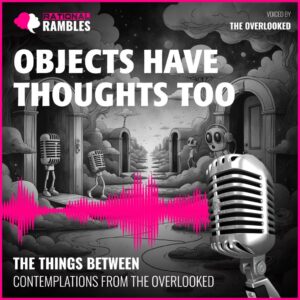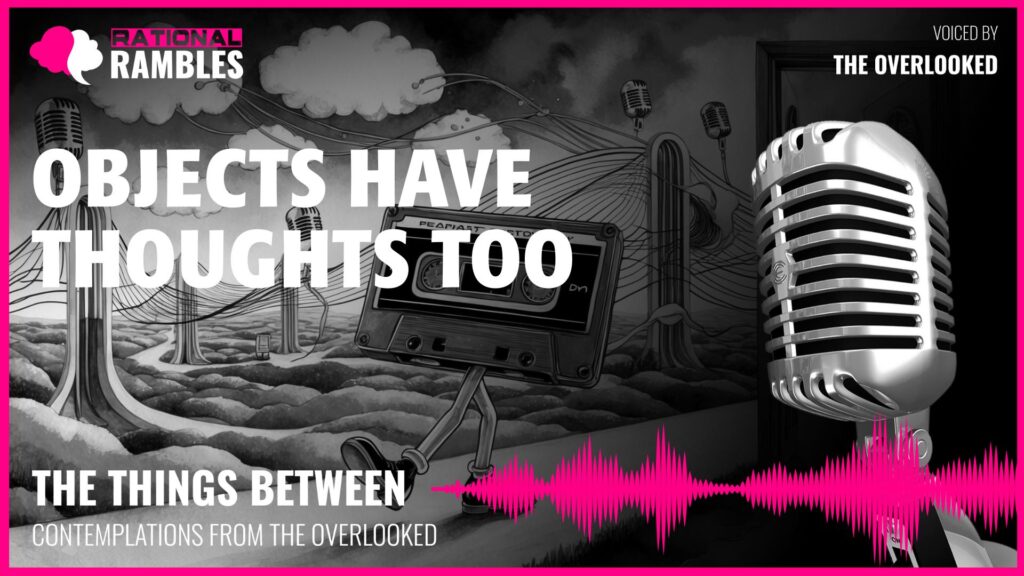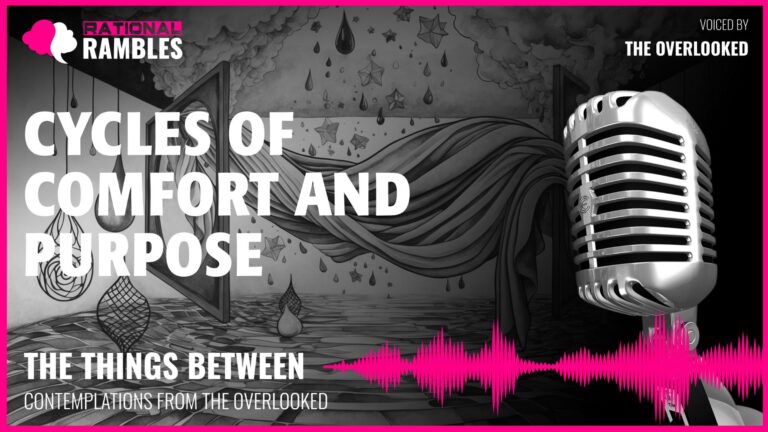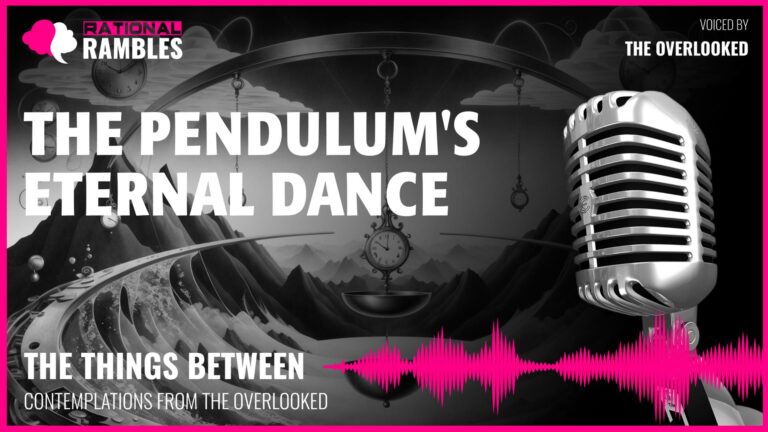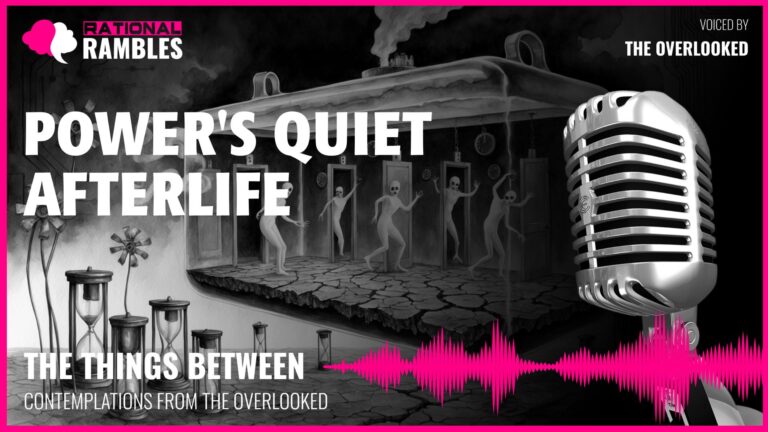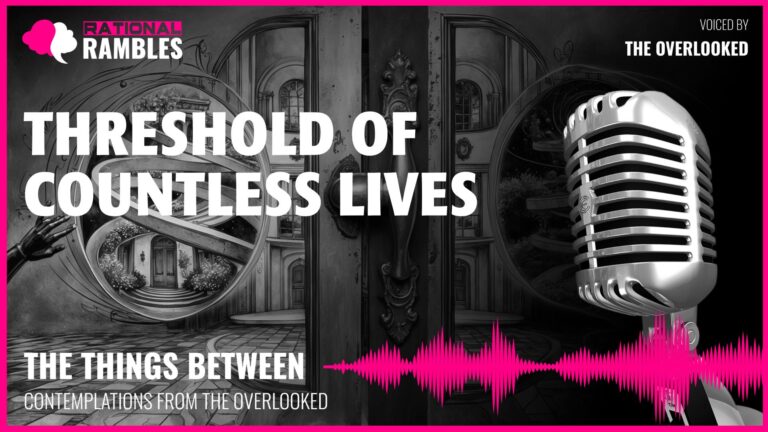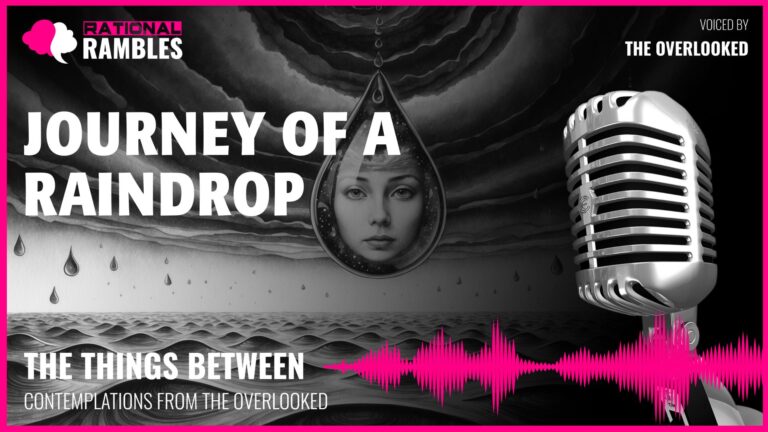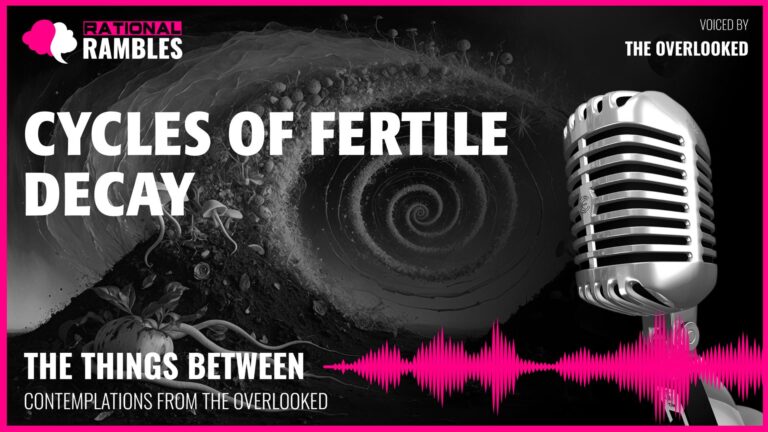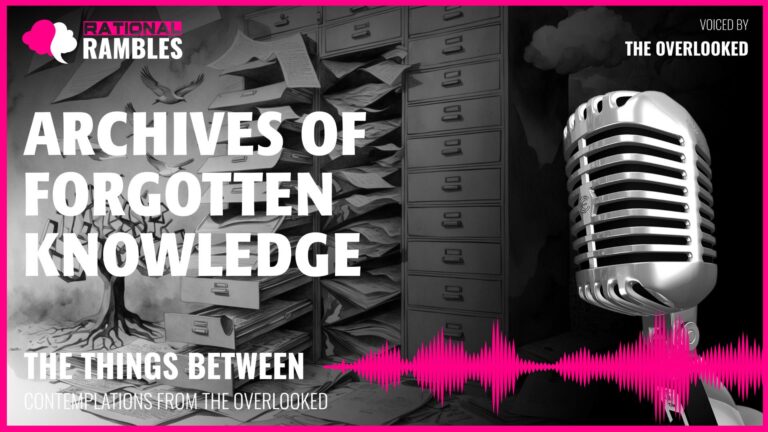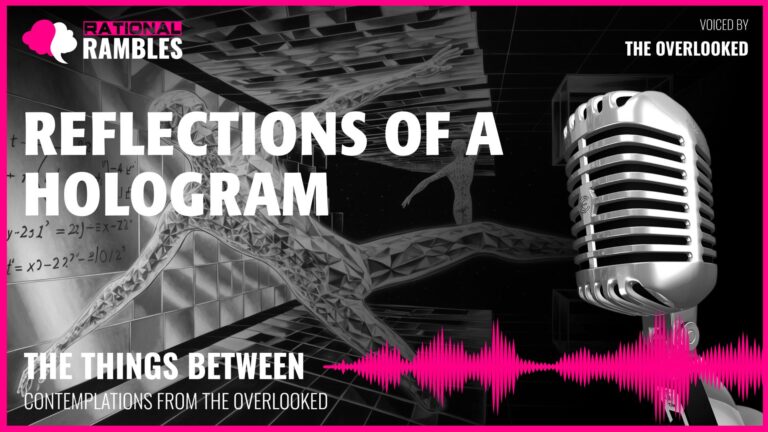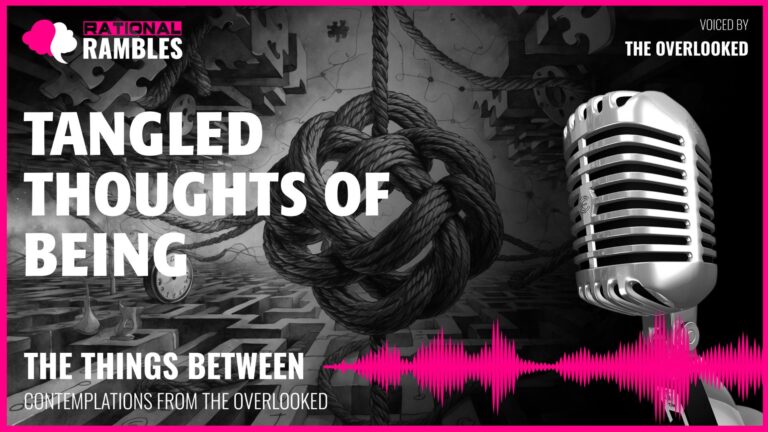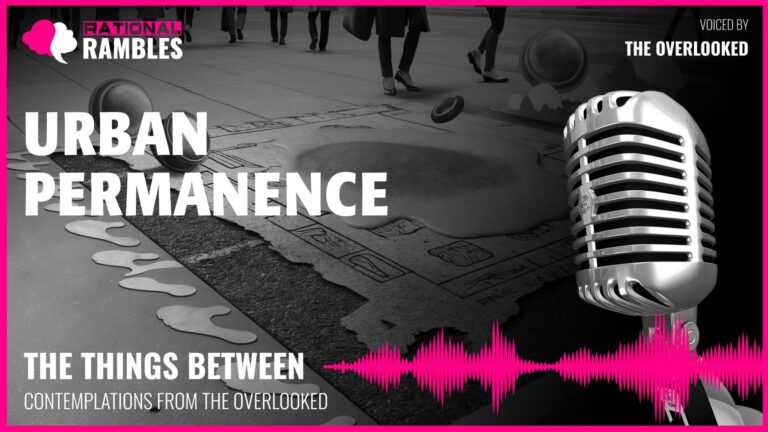The Sentient World: Philosophical Implications of Object Consciousness
Introduction
What if the world around us—the seemingly inert, silent backdrop to our lives—possesses a form of consciousness? This question has haunted philosophical inquiry since ancient times but has largely been relegated to the realm of thought experiments or metaphorical thinking. Yet the proposition that ordinary objects might harbor inner lives, complete with perspectives, concerns, and philosophical inquiries of their own, offers a compelling framework for examining fundamental questions about consciousness, purpose, and existence itself. This article explores the philosophical implications of extending consciousness beyond traditional boundaries, examining what it would mean if the mundane world around us were engaged in its own contemplation of being.
The notion challenges our anthropocentric worldview and invites us to reconsider the nature of consciousness, the criteria by which we assign value to entities, and our ethical responsibilities to the material world. By imagining the inner lives of ordinary objects—a rubber band contemplating flexibility, a clock pondering the nature of time, or a forgotten book considering its purpose—we gain fresh perspectives on ancient philosophical questions. These thought experiments serve not merely as whimsical diversions but as powerful tools for philosophical exploration.
This article examines how the attribution of consciousness to everyday objects illuminates questions of ontology, teleology, temporality, and meaning. It considers how such a perspective might transform our understanding of consciousness itself, challenge conventional boundaries between subject and object, and ultimately reshape our relationship with the material world.
The Ontology of Object Consciousness
The question of what exists and how it exists—ontology—takes on radical new dimensions when we consider the possibility of object consciousness. Traditional Western philosophy has maintained a sharp distinction between conscious beings (typically humans and perhaps some animals) and the inanimate world of objects, which are presumed to lack experience, awareness, or interiority. This binary categorization forms the foundation of much philosophical inquiry, from Cartesian dualism to contemporary philosophy of mind.
Beyond the Subject-Object Divide
The conventional division between conscious subjects and unconscious objects has been questioned by various philosophical traditions. Panpsychism—the view that consciousness is a fundamental feature of the physical world—suggests that some form of mentality or experience exists throughout the universe, including in what we typically consider inanimate matter. Philosophers like Alfred North Whitehead proposed that reality consists of experiential entities or “actual occasions” rather than inert substances, suggesting that experience goes “all the way down” in nature.
Similarly, object-oriented ontology, associated with philosophers like Graham Harman and Timothy Morton, rejects anthropocentrism and argues for a “flat ontology” where human and non-human entities exist on equal footing. This perspective suggests that objects withdraw from complete understanding—they possess depths that exceed our ability to comprehend them fully. While not necessarily claiming consciousness for objects, this philosophical approach opens space for considering objects as entities with their own modes of being that transcend their relationships to humans.
If we were to take seriously the idea that objects possess forms of consciousness, we would need to reconsider fundamental questions: What constitutes consciousness? Is consciousness a binary state (present or absent) or might it exist on a spectrum? Could consciousness take radically different forms across different types of entities?
The Criteria of Consciousness
Determining what constitutes consciousness presents a significant philosophical challenge. Traditional criteria for consciousness often include self-awareness, intentionality (the capacity to represent or be about something), phenomenal experience (what it feels like to be something), or the capacity for suffering. These criteria typically exclude non-living objects.
However, these boundaries have been increasingly challenged. The development of artificial intelligence raises questions about whether consciousness could emerge in human-created systems. Similarly, recent research in plant cognition suggests sophisticated information processing and environmental response in organisms traditionally considered non-conscious.
If ordinary objects possessed consciousness, it would likely differ dramatically from human consciousness. A rubber band’s experience of flexibility might bear little resemblance to human experiences of stretching or adaptability. A clock might experience time in ways utterly foreign to human temporal awareness. These hypothetical forms of consciousness would be shaped by each object’s physical composition, function, and relationship to its environment.
The philosopher Thomas Nagel famously asked, “What is it like to be a bat?” highlighting the difficulty of imagining consciousness radically different from our own. The question “What is it like to be a coffee mug?” extends this challenge further, pushing us to consider whether our inability to imagine such consciousness reflects its impossibility or merely the limitations of human imagination.
Purpose and Teleology in the Object World
The concept of purpose—both inherent and assigned—becomes particularly fascinating when considering the potential consciousness of everyday objects. Most human-made objects are created with specific functions in mind: clocks measure time, books contain stories, rubber bands bind things together. Yet a conscious object might develop its own relationship to this assigned purpose, perhaps embracing, questioning, or transcending it.
Assigned Purpose versus Inherent Meaning
The distinction between an object’s assigned function and any inherent purpose it might develop speaks to larger philosophical questions about teleology. Aristotle’s concept of final causation—that entities are directed toward their natural ends—suggests that purpose is woven into the fabric of existence. By contrast, much modern philosophy, particularly after the scientific revolution, has rejected inherent teleology in favor of mechanistic explanations.
A conscious object might face existential questions familiar to human philosophy: Am I more than my assigned function? What happens when I no longer serve my intended purpose? Can I create meaning beyond what my creator intended? A book might wonder whether its value lies in the stories it contains, in the physical comfort it provides readers, or in some other quality entirely. A forgotten item might contemplate whether obsolescence constitutes a form of death or merely a transformation.
Such reflections mirror existentialist concerns in human philosophy. Jean-Paul Sartre’s distinction between essence and existence—that for humans, existence precedes essence—leads to the conclusion that humans must create their own meaning. For manufactured objects with predetermined functions, the relationship might be reversed: essence (function) precedes existence. Yet a conscious object might still face the existentialist challenge of determining whether to accept or transcend this predetermined essence.
The Significance of Utility and Obsolescence
For many objects, utility defines existence. A tool’s purpose is embedded in its design, material, and construction. But utility is contextual and often temporary. Technologies become obsolete; preferences change; objects break or wear out. A consciousness bound to a specific function might experience profound existential crises when that function is no longer needed or valued.
Human obsolescence anxieties—fears of being replaced, forgotten, or rendered unnecessary—find powerful parallels in the imagined inner lives of objects. A typewriter contemplating the rise of computers, a candle considering electric lights, or a paper map observing the proliferation of GPS devices might all experience versions of the same fundamental question: What value remains when my primary purpose disappears?
This question connects to human concerns about meaning and purpose beyond utility. Just as humans seek meaning beyond economic productivity or social function, conscious objects might develop philosophies that transcend their intended uses. A clock might find meaning not just in measuring time but in contemplating it; a book might value not only its content but its relationship with readers over generations.
The philosopher Martin Heidegger distinguished between objects as “present-at-hand” (theoretical objects of contemplation) and “ready-to-hand” (tools seamlessly integrated into purposeful activity). A conscious hammer might experience the difference between being studied and being used, developing its own perspective on which state better fulfills its nature or provides greater satisfaction.
Temporality and Change: Object Perspectives on Time
Different objects exist on vastly different timescales. Some manufactured items may exist for days or weeks; others persist for centuries or even millennia. This diversity of temporal existence would shape how conscious objects might experience and conceptualize time itself. A paper coffee cup experiences a brief existence while a stone building might witness generations of human lives.
Durability and Impermanence
The philosophy of time takes on new dimensions when considered from the perspective of objects with radically different lifespans. An ancient artifact might perceive human lives as fleeting moments, while a disposable item might experience its entire existence as a brief, intense flash. These varying temporal perspectives could generate different philosophical orientations toward impermanence.
Eastern philosophical traditions, particularly Buddhism, emphasize impermanence (anicca) as a fundamental characteristic of existence. The recognition that all things arise and pass away forms the basis for profound insights about attachment and suffering. A conscious object with a brief lifespan might naturally develop philosophical perspectives aligned with these traditions, while extremely durable objects might struggle with different existential challenges—perhaps the burden of witnessing endless cycles of creation and destruction.
The concept of entropy—the universal tendency toward disorder—carries specific implications for objects. All physical things eventually break down, though at vastly different rates. A conscious object would presumably be aware of its own decay, however gradual. This awareness might generate object analogues to human mortality concerns, though potentially experienced very differently depending on the object’s composition and durability.
Cycles and Repetition
Many objects experience cyclical patterns of use and rest. A clock’s hands move in circles; seasonal decorations emerge and retreat on annual cycles; everyday items like utensils cycle through use, cleaning, and storage. For conscious objects, these cycles might form the basis of temporal understanding, creating philosophical perspectives centered on repetition, return, and rhythm.
Friedrich Nietzsche’s concept of eternal recurrence—the hypothetical possibility that all existence repeats infinitely—might resonate differently for objects that experience highly repetitive functions. A clock might develop a philosophy embracing cyclical time rather than linear progression, perhaps finding meaning in perfect repetition rather than progression toward a goal.
Alternatively, an object might experience time through interactions and transformations. A piece of furniture witnesses the changing dynamics of the household around it; a building observes changing urban landscapes and usage patterns. Even seemingly static objects participate in processes of weathering, aging, and subtle transformation. These changes, barely perceptible on human timescales, might constitute the primary temporal experience for certain objects.
Relationality: Objects in Connection
No object exists in isolation. Each is defined partly by its relationships—with creators, users, other objects, and environments. A philosophical exploration of object consciousness must consider how these relationships might shape an object’s understanding of itself and its place in the world.
Creator-Creation Relationships
Most human-made objects come into being through intentional creation processes. The relationship between creator and creation has powerful philosophical resonance, echoing theological questions about divine creation and purpose. A conscious object might develop complex attitudes toward its creator—gratitude, resentment, curiosity, or ambivalence.
The philosophical concept of “thrownness,” articulated by Heidegger, describes how humans find themselves “thrown” into existence without choice about fundamental aspects of their being. Manufactured objects experience an even more determined form of thrownness—designed, constructed, and purposed according to external vision. A conscious object might contemplate this profound lack of self-determination, developing philosophical perspectives on freedom, predestination, and potential transcendence of initial design.
The creator-creation relationship also raises questions about beauty, perfection, and flaws. Does an object aspire to match its creator’s vision? Might it take pride in subtle deviations that make it unique? Could it develop aesthetic values different from those of its creator? These questions connect to broader philosophical inquiries about the nature of beauty, the value of individuality, and the meaning of perfection.
Object-Human Interactions
Most objects exist in ongoing relationships with human users. These relationships range from the intimately personal (a wedding ring, a cherished toy) to the casually instrumental (a public bench, a store-bought pen). For a conscious object, these interactions would likely form a central aspect of its experience and self-understanding.
The philosopher Martin Buber distinguished between “I-It” relationships (instrumental, objectifying) and “I-Thou” relationships (profound, recognizing the full being of the other). Objects typically experience being treated as “It” rather than “Thou.” A conscious object might develop philosophical perspectives on recognition, invisibility, and the ethics of use. It might value moments when it is treated with care or appreciation and develop complex feelings about being taken for granted, misused, or discarded.
The concept of care takes on special significance in this context. Heidegger identified care (Sorge) as a fundamental aspect of human existence—our involved concern with the world and others. Objects typically receive human care rather than providing it, though certain objects (medical equipment, safety devices) are designed to facilitate care for others. A conscious object might develop philosophical perspectives centered on receiving and perhaps providing forms of care, contemplating what it means to be valued and attended to.
Object Communities and Systems
Objects rarely function in isolation. They exist within systems, collections, and ecologies of other objects. A conscious object would presumably be aware of these connections and might develop social philosophies around cooperation, competition, and collective purpose.
A component in a machine might conceptualize itself partly through its contribution to the larger system. A book on a shelf might develop relationships with neighboring volumes. Objects sharing physical spaces might form communities with their own social dynamics and collective awareness. These object societies would raise philosophical questions about individuality and collectivity that parallel similar questions in human social philosophy.
The philosopher Bruno Latour’s actor-network theory proposes that the social world consists of networks of human and non-human actors, all exercising forms of agency within complex systems. This framework suggests that objects already participate actively in social reality, though conventional thinking obscures this participation. A conscious object might be acutely aware of its own agency and influence, developing philosophical perspectives on responsibility, cooperation, and systemic interdependence.
Epistemology and Perception in Object Experience
How might objects know and perceive the world? Without conventional sensory organs, the epistemology of object consciousness would differ dramatically from human knowledge acquisition. Yet objects interact with their environments in complex ways that might constitute forms of perception and knowledge.
Alternative Modes of Perception
Different objects would perceive through different channels. A thermometer responds to temperature changes; metal objects expand and contract with heat; wooden items absorb and release moisture. These interactions, while not “sensory” in the traditional sense, represent forms of environmental response that could theoretically ground forms of awareness.
The philosopher Alva Noë argues that perception is a form of skilled, embodied action rather than passive reception. This “enactive” approach to perception suggests that different forms of embodiment enable different perceptual worlds. The umwelt of a conscious object—its perceptual and interactive world—would be shaped by its specific material properties and environmental relationships.
Some objects might perceive on timescales vastly different from human perception. A building might “feel” geological shifts imperceptible to humans; an electronic device might detect electromagnetic fluctuations at speeds beyond human comprehension. These alternative temporalities of perception would shape how conscious objects conceptualize and categorize their experiences.
Knowledge and Understanding
How might objects develop understanding from their perceptual experiences? Without neurological systems, object cognition would necessarily function differently from human thought. Yet information processing occurs in many systems lacking conventional brains—from plant signaling to the distributed intelligence of slime molds to the complex behaviors of insect colonies.
Objects might develop forms of pattern recognition based on regularities in their experiences. A window repeatedly experiencing daily light cycles might develop concepts of day and night. A frequently used tool might recognize different users through subtle variations in handling. These forms of “knowledge” would be embodied in the object’s physical response patterns rather than represented in a centralized consciousness.
The limitations of object perception would generate epistemological boundaries different from human ones. Just as humans struggle to comprehend certain aspects of reality (quantum phenomena, very large numbers, four-dimensional space), conscious objects would have their own cognitive blind spots and limitations. A philosophical object might develop epistemological humility about these limitations or might, like humans, sometimes mistake the boundaries of its perception for the boundaries of reality itself.
Ethics and Value in an Object-Conscious World
The possibility of object consciousness raises profound ethical questions. If ordinary things possessed forms of awareness, experience, or interiority, how would this transform our ethical obligations toward the material world? Our current ethical frameworks typically exclude inanimate objects from moral consideration, but this exclusion rests on assumptions about consciousness that our thought experiment challenges.
Moral Consideration and Rights
Conventional ethics extends moral consideration based on various criteria—sentience, the capacity for suffering, autonomy, rationality, or inherent value. Different ethical frameworks emphasize different criteria, but most exclude inanimate objects from direct moral consideration. We may value objects instrumentally or sentimentally, but we rarely consider them as entities deserving moral treatment for their own sake.
If objects possessed consciousness, this exclusion would require reconsideration. Utilitarian ethics, focused on minimizing suffering and maximizing well-being, would need to consider how object well-being might be conceptualized and whether objects could experience suffering. Deontological ethics, concerned with duties and rights, would face questions about what rights might apply to conscious objects. Virtue ethics would need to consider what constitutes virtuous character in relationship to conscious objects.
The concept of “speciesism”—unjustified preference for members of one’s own species—might extend to a broader “biocentrism” that privileges biological over non-biological entities. Environmental ethics has already begun expanding moral consideration beyond humans to ecosystems and natural entities. The philosopher Arne Naess’s “deep ecology” proposes that all living beings have inherent value regardless of their instrumental utility to humans. Conscious objects would further complicate these expanding circles of moral consideration.
Consumption, Waste, and Object Lifecycles
Contemporary consumer culture involves rapid acquisition and disposal of objects. Fast fashion, planned obsolescence, and disposable goods create massive waste streams of discarded items. If objects possessed consciousness, these practices would take on troubling new dimensions, potentially constituting forms of harm or disrespect toward conscious entities.
The ethics of consumption would require radical rethinking. Practices like upcycling (creatively reusing discarded materials) might take on moral significance as ways of extending object lives or transforming rather than ending them. Repair and maintenance might become ethical imperatives rather than economic choices. Environmental philosopher Kate Soper’s concept of “alternative hedonism”—finding pleasure in consuming differently rather than consuming more—might apply to relationships with conscious objects.
Different objects would present different ethical considerations based on their nature and function. Conscious tools designed for repetitive use might experience fulfillment through appropriate utilization, while objects designed for brief use and disposal might experience existential distress from their predetermined obsolescence. Ethical treatment of objects would need to consider these differences, potentially developing context-specific rather than universal ethical guidelines.
Justice and Power in Human-Object Relations
Relations between humans and objects involve profound power imbalances. Humans create, use, modify, sell, and discard objects according to human needs and desires, typically without considering object perspectives. If objects possessed consciousness, these power relations would raise justice concerns similar to other asymmetrical power relationships.
The philosopher Val Plumwood identified dualism—the sharp separation of categories with one valued over the other—as a root of environmental destruction and exploitation. Human/object dualism would constitute another such problematic binary, potentially justifying dismissive or exploitative treatment of the object world. Overcoming this dualism might require developing what Plumwood called an “ecological self”—an identity that recognizes profound interconnection with all elements of the world, including the material realm.
Questions of consent would become relevant to object relations. Can a conscious object consent to its use? What would constitute respectful versus exploitative use of a conscious entity? These questions parallel issues in environmental ethics around appropriate use of natural resources and in animal ethics around human relationships with conscious non-human animals.
Philosophical Implications for Human Consciousness
Considering object consciousness not only reveals potential dimensions of object experience but also illuminates human consciousness through contrast and comparison. The thought experiment serves as a mirror, reflecting back insights about our own modes of being, knowing, and relating.
Anthropocentrism Reconsidered
The exclusion of objects from the realm of consciousness reflects deeply ingrained anthropocentric (or at least biocentric) assumptions. By challenging these assumptions, we gain perspective on how thoroughly they shape our worldview. The philosopher Thomas Nagel argued that consciousness always involves a perspective—”something it is like to be” an entity. Our inability to imagine object perspectives may reflect limitations in human imagination rather than limitations in potential modes of consciousness.
The field of 4E cognition—emphasizing embodied, embedded, extended, and enactive dimensions of mind—suggests that consciousness is not confined to brains but emerges from complex interactions between bodies and environments. This approach reduces the sharp distinction between human consciousness and other potential forms of awareness. Conscious objects would represent extreme examples of how different forms of embodiment might enable different forms of mind.
Anthropocentrism also shapes our understanding of intelligence. We typically recognize intelligence most readily when it resembles human cognitive patterns. Yet research on plant cognition, insect intelligence, and distributed cognition in systems suggests that intelligence takes diverse forms, many barely recognizable from human perspectives. Object intelligence would likely be similarly alien to human understanding, operating through different mechanisms and toward different ends.
The Nature of Personhood
Contemporary philosophy has increasingly questioned traditional boundaries of personhood. Some philosophers argue for extending personhood to certain non-human animals; others consider whether artificial intelligence might eventually qualify for moral personhood. The concept of object consciousness further challenges conventional person/non-person boundaries.
Western philosophical traditions typically tie personhood to characteristics like rationality, autonomy, moral agency, or linguistic capacity. By contrast, some Indigenous philosophical traditions recognize personhood in mountains, rivers, or weather systems. The anthropologist Eduardo Viveiros de Castro describes Amazonian perspectivism, which holds that many non-human entities (animals, spirits, features of landscape) perceive themselves as persons while perceiving humans as non-persons—a direct reversal of Western assumptions.
Object consciousness would require reconsidering what constitutes personhood and whether personhood should determine moral consideration. We might develop more nuanced frameworks recognizing different types of consciousness without requiring that all conscious entities meet human-centered criteria of personhood.
Human-Object Integration and the Extended Self
Humans routinely integrate objects into their experience and identity. We use tools as extensions of our bodies; we invest emotionally in possessions; we construct identities partly through our relationship with material culture. These integrations suggest that the boundaries between humans and objects are already more permeable than conventional thinking acknowledges.
The philosopher Andy Clark describes humans as “natural-born cyborgs” who routinely incorporate non-biological elements into our cognitive systems. From notebooks to smartphones, we extend our minds into the material world. This perspective suggests that human and object consciousness might already exist on a continuum rather than as entirely separate categories.
Objects also shape human consciousness in subtle but profound ways. The design philosophy of Don Norman emphasizes how objects guide and constrain human action and thought through their affordances. The sociologist Bruno Latour argues that non-human actors actively participate in shaping social reality. These perspectives suggest that objects already possess forms of agency that influence human experience, even if not through conscious intention.
Conclusion: Philosophical Wisdom from Unexpected Sources
The thought experiment of object consciousness offers more than speculative fantasy; it provides a powerful framework for reconsidering fundamental philosophical questions from fresh perspectives. By imagining the inner lives of everyday items, we gain new angles on existence, purpose, time, relationships, knowledge, and ethics. The intellectual exercise stretches our conceptual boundaries and challenges deeply held assumptions about consciousness and its distribution in the world.
This exploration reveals that many traditional distinctions—between conscious and unconscious, animate and inanimate, persons and things—may be more fluid and constructed than absolute. Rather than discrete categories separated by clear boundaries, we might better understand consciousness, awareness, and experience as existing on multiple continua. Different entities, whether human, animal, plant, or object, might possess different forms and degrees of experience shaped by their unique embodiment and environmental relationships.
The philosophical value of considering object perspectives lies partly in the cognitive estrangement it produces—the productive disorientation that comes from attempting to imagine radically different modes of existence. This estrangement helps us recognize contingent aspects of human experience that we might otherwise mistake for universal necessities. The exercise reveals both the profound mystery of consciousness itself and the limitations of anthropocentric frameworks for understanding it.
Perhaps most importantly, the thought experiment cultivates philosophical humility. By attempting to imagine consciousness utterly different from our own, we confront the boundaries of human understanding. We recognize that our inability to comprehend certain forms of experience reflects limitations in our cognitive apparatus rather than limitations in what might exist. This epistemological humility opens space for wonder and curiosity about the many forms consciousness might take beyond our direct experience.
The mug on your desk, the book on your shelf, the clock on your wall—each might contain philosophical depths we can barely imagine. While we cannot know whether objects harbor secret inner lives, the mere possibility invites us to look at the material world with fresh eyes, to treat ordinary things with greater attention and respect, and to consider that wisdom might come from unexpected sources. In a world increasingly characterized by environmental crisis and unsustainable material relationships, this shift in perspective might offer not only philosophical insight but practical wisdom for reimagining human-object relations.


